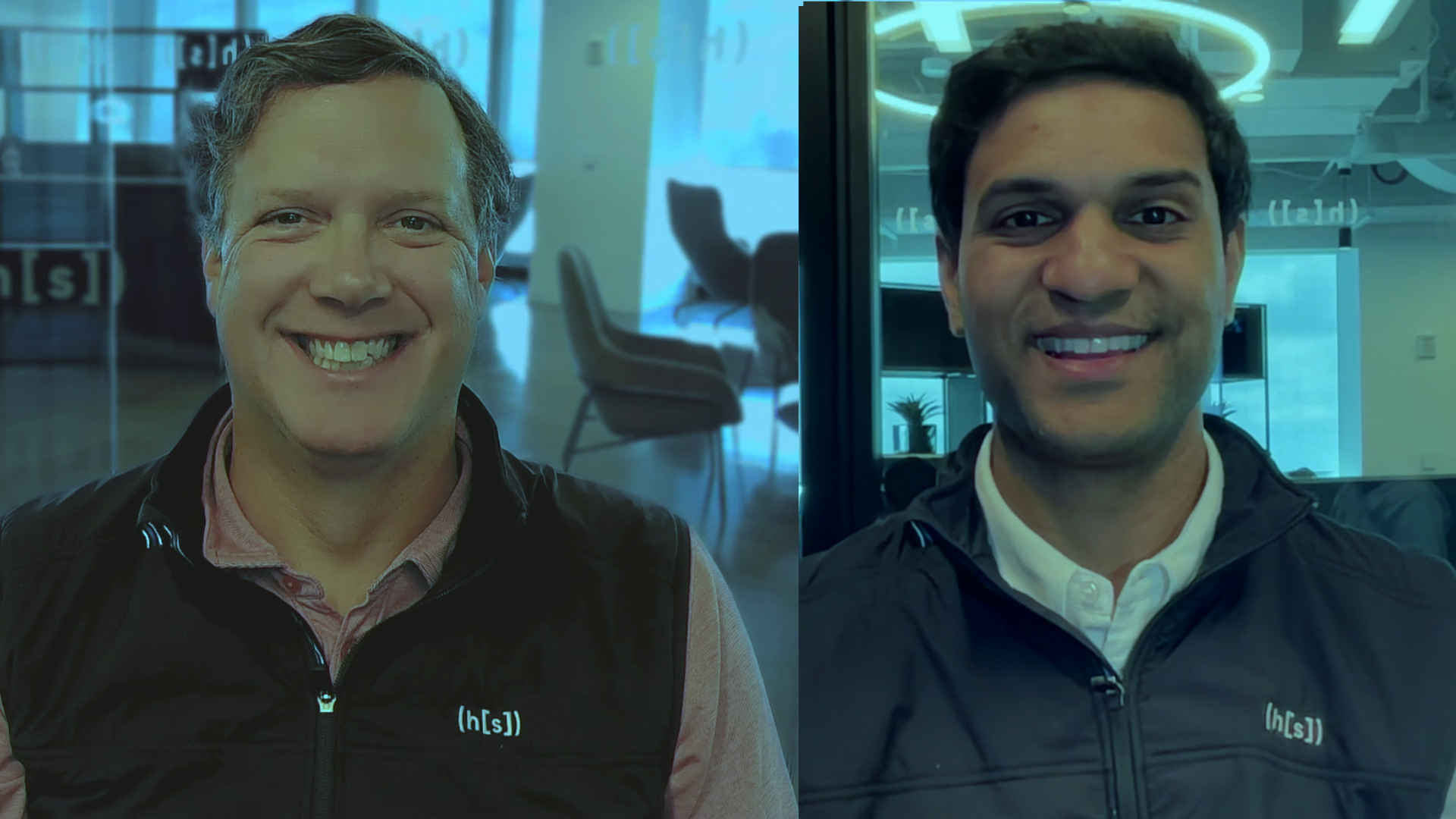 AI
AI
 AI
AI
 AI
AI
The rise of AI has transformed how businesses operate, particularly with its latest innovation: generative AI applications. These advancements empower organizations to process and use complex data in previously unfathomable ways. The recent developments in AI, especially in hyperautomation AI, are paving the way for remarkable levels of efficiency and innovation.
“We just posted some of our best growth results we’ve had in our history,” said Andrew Joiner (pictured, left), chief executive officer of Hyper Labs Inc. “So we’re excited about the growth. But behind that growth are some product announcements [and] some leadership recognition from some of the leading analyst firms.”
Joiner and Mayur Pillay (right), vice president of corporate development at Hyperscience, joined Shelly Kramer, managing director and principal analyst at theCUBE Research, to discuss the impact Hyperscience’s recent product innovations are having in the hyperautomation AI arena. (* Disclosure below.)
Hyperscience has experienced unprecedented growth in the past few months, achieving significant milestones that underscore its prominence in the generative AI arena. The company’s innovations have recently earned it a “Leader” status in reports from two notable industry analysts.
“We achieved a leadership status with Forrester and IDC, who are covering our market in different terms: one (is) document mining and the other [is] called [intelligent document processing],” Joiner said. “We’re excited about the growth we have with our customers overall.”
Hyperscience’s growth isn’t just about the numbers; it’s also about the innovative products the company is bringing to the market, Joiner observed. The company’s most recently introduced solution, Hypercell for GenAI, extends the company’s capabilities in hyper-automation AI. The solution uses advanced AI models to read and process human-friendly information, providing businesses with tools to manage complex, mission-critical documents with a focus on governance, transparency and security.
Unlike traditional generative AI applications, which create prose and human-friendly information, Hyperscience’s approach focuses on reading and understanding this information, according to Joiner. This method equips organizations with the ability to automate previously manual and labor-intensive processes, unlocking substantial value from the data companies already possess.
“We use models to essentially read human-friendly information, and that’s really the opposite of generative AI,” he said. “Generative AI uses very powerful frontier models to generate prose and human-friendly information.”
Joiner explained the advantage of Hyperscience’s approach, saying, “We’re able to access very complex, mission-critical documents that are embedded in the core of the enterprise, and frankly, most of the stuff has not been automated by businesses.”
This capability is crucial for businesses that rely on data embedded in documents such as purchase orders, invoices and statements. By providing a bridge between this critical data and frontier AI models, Hypercell for GenAI allows enterprises to harness the full potential of data. The product’s ability to deliver this data accurately and efficiently to AI systems paves the way for new business opportunities and applications.
Pillay noted that partnerships with Google Cloud Platform and Hewlett Packard Enterprises Co. enable Hyperscience to “provide a kind of end-to-end development platform.” Enterprises can bring in propriety data but “bring it in a way where it’s accurate, where it’s labeled and it’s ready to be used by AI systems, and then actually deliver gen AI experiences that are grounded in the language of the business.”
Adopting hyperautomation AI capabilities opens the door to ample new opportunities for organizations but also brings challenges. While the potential for automation and efficiency is significant, organizations often face hurdles in integrating these technologies into existing workflows. Hyperscience addresses these challenges by providing solutions that eliminate friction and demonstrate a provable return on investment, a crucial factor for widespread adoption, according to Joiner.
“The opportunity that we see is vast because this is mission-critical data that’s embedded, that really they run their businesses on, and we’re able to eliminate a lot of friction that’s inside the company,” he said. “We have a provable ROI that we can deliver back to the enterprise and that’s been missing from the generative AI conversation.”
Moreover, the importance of data as the foundation of AI can’t be overstated. Citing three stacks organizations need to address to deploy generative AI — compute, model and data — Pallay noted that while many large software companies are investing heavily in the compute and model stacks, the data stack is proving more difficult.
“On the model stack side, you have all the foundation models that have been developed, the multi-billion parameter models,” he said. “But while all that’s really complex, there’s a lot of complexity in the data stack and that is getting all of your data ready to actually be used by AI applications.”
Generative AI heralds a full platform shift, Joiner explained. The technology offers the opportunity to reimagine the software organizations use every day, he added.
“I would encourage businesses to lean into the generative capabilities,” he said. “I think businesses that use AI will replace the businesses that don’t. I think they need to lean into it, and I think this is a transformative time and exciting time for all of us.”
Here’s theCUBE’s complete video interview with Andrew Joiner and Mayur Pillay:
(* Disclosure: Hyper Labs Inc. sponsored this segment of theCUBE. Neither Hyperscience nor other sponsors have editorial control over content on theCUBE or SiliconANGLE.)
Support our mission to keep content open and free by engaging with theCUBE community. Join theCUBE’s Alumni Trust Network, where technology leaders connect, share intelligence and create opportunities.
Founded by tech visionaries John Furrier and Dave Vellante, SiliconANGLE Media has built a dynamic ecosystem of industry-leading digital media brands that reach 15+ million elite tech professionals. Our new proprietary theCUBE AI Video Cloud is breaking ground in audience interaction, leveraging theCUBEai.com neural network to help technology companies make data-driven decisions and stay at the forefront of industry conversations.